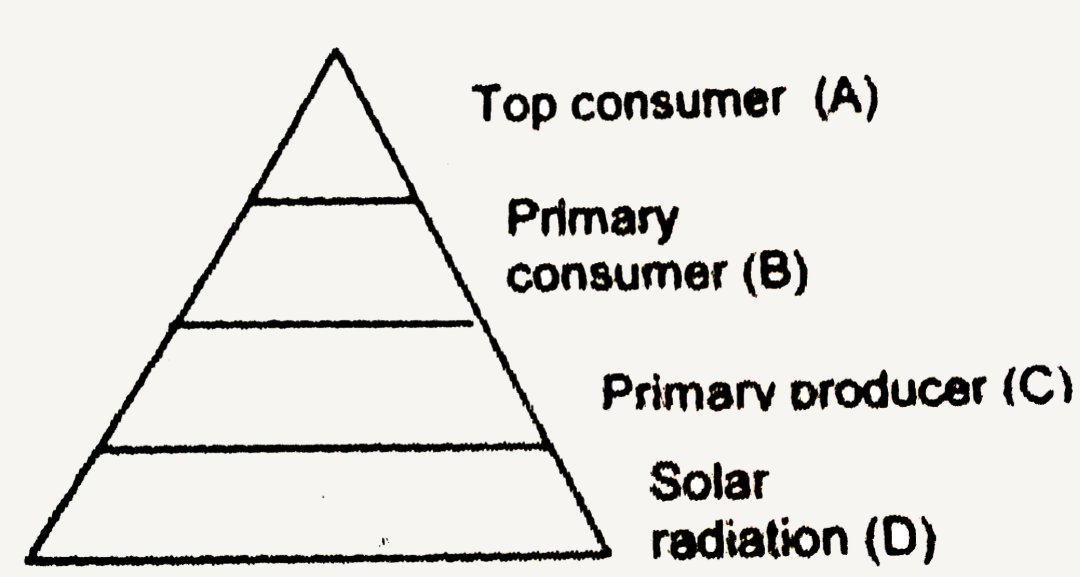
(A) 10 kcal//m^(2)//yr<br>(B)100 kcal//m^(2)//yr<br>(C)1,000 kcal//m^(2)//yr<br>(D)1,00,000 kcal//m^(2)//yr
Refer to the above diagram of energy pyramid. The ecological efficiency at primary consumer level, in comparison to that at secondary consumer level, is
A
same
B
more
C
less
D
can not be ascertained from the data
Text Solution
The correct Answer is:A
Ecological efficiency is the percentage of energy converted into biomass by a higher trophic level over the energy of food resources available at the lower trophic level. In both cases mentioned in the question, it will be 1/10.
|
Topper's Solved these Questions
Similar Questions
Knowledge Check
In a pyramid of biomass, if the total dry weight (kg/m2) of primary producers is about 809 it will decrease at tertiary consumer level upto
A37kg/m2B11kg/m2C5kg/m2D1.5kg/m2If 10,000 J of energy is present at the T1 level, then what is the energy available at the T2 level ?
A1000 JB10 JC100 JD1 JWhich of the following is expected to have the highest value (g/m2/yr) in a grassland ecosystem?
ANet Production (NP)BSecondary ProductionCTertiary ProductionDGross Production (GP)
Rate of biomass production is expressed as :
(a) (kcalm−2)yr−1
(b) kcalgm2yr−1
(c) gm3yr
(d) gm−2yr
View SolutionWhich of the following is expected to have the highest value (gm/m2/yr) in a grassland ecosystem?
View SolutionWhich of the following is expected to have the highest value (gm/m2/yr) in a grassland ecosystem?
View SolutionWhich of the following is expected to have the highest value (gm/m2/yr) in a grassland ecosystem?
View SolutionWhich of the following is expected to have the highest value (gm/m2/yr) in a grassland ecosystem?
View Solution

